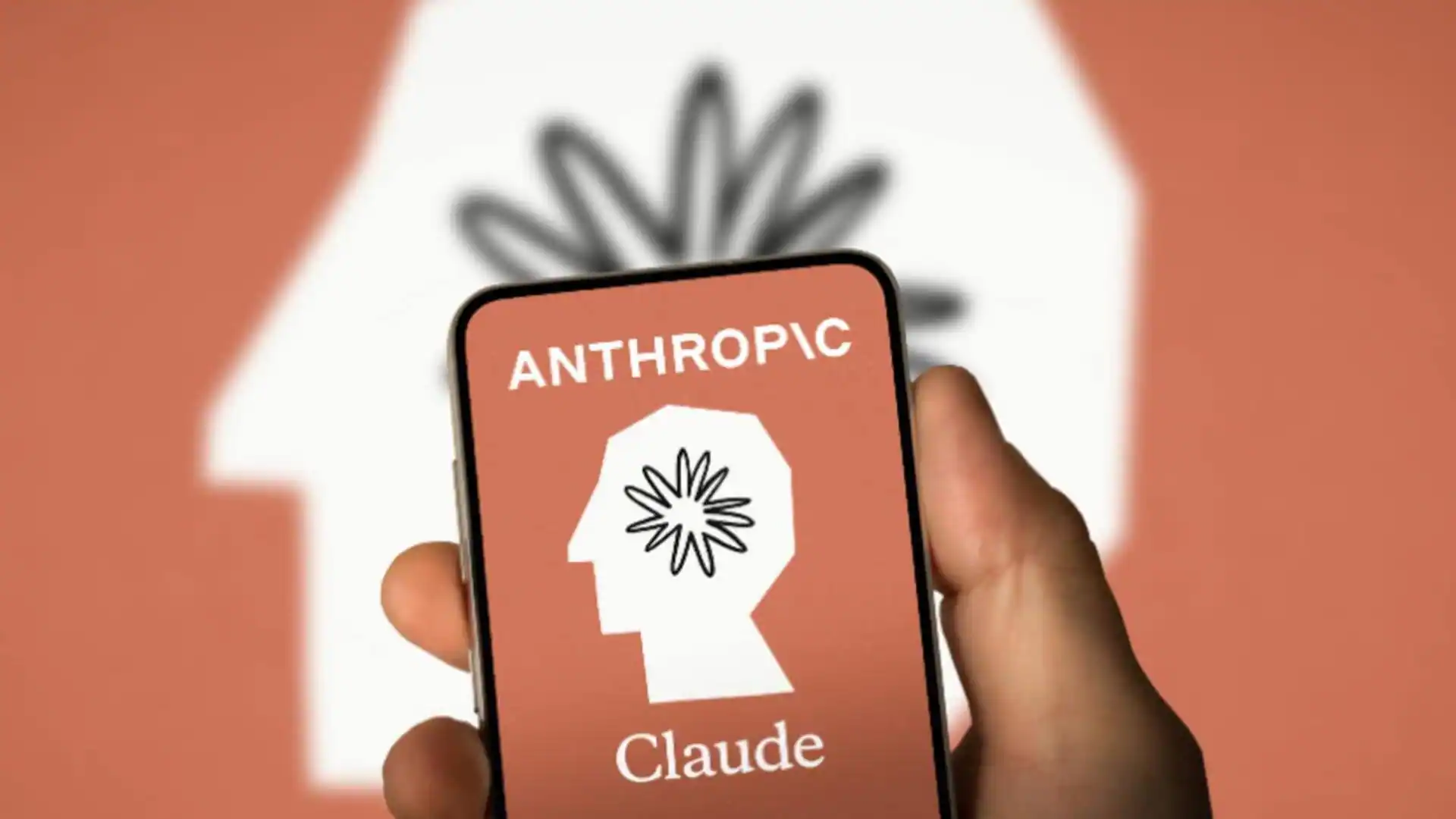AI
Early AI Investor Elad Gil Sees Huge Potential in AI-Powered Rollups to Transform Traditional Businesses
After early bets on ChatGPT startups, Gil now focuses on using AI to scale people-heavy industries with innovative rollup strategies

Elad Gil has been ahead of the curve on AI investing from the very start. Long before ChatGPT became a household name, Gil was quietly backing pioneers like Perplexity, Character.AI, and Harvey. But now, as the initial wave of AI success stories emerges, the seasoned solo venture capitalist is turning his attention to a fresh, transformative opportunity: leveraging AI to reinvent traditional, labor-intensive businesses through rollups.
The concept is straightforward yet powerful. Gil aims to acquire mature service firms—think law offices or other professional services—and use AI to automate repetitive tasks, boosting efficiency and margins. With improved cash flow, these AI-enhanced companies can then acquire others, scaling rapidly in a cycle that Gil believes could reshape entire industries.
“It just seems so obvious,” Gil told us in a recent Zoom conversation. “Generative AI excels at understanding and manipulating language—whether it’s text, audio, or video—and can automate everything from coding to sales outreach to back-office work.” The key advantage? Owning these businesses outright allows for swift transformation, driving margins from, say, 10% to 40%, a massive leap that creates significant leverage in acquisitions.
Gil has already placed bets on two startups embracing this model, including Enam Co., a productivity-focused firm valued at over $300 million and backed by industry giants like Andreessen Horowitz and OpenAI’s Startup Fund. While details remain private, Gil stresses that AI-driven rollups are fundamentally different from earlier “tech-enabled” rollup attempts, which often just slathered a thin technological veneer on traditional companies without genuine operational change.
Yet, challenges remain—chiefly in assembling the right teams with both technical prowess and private equity experience. Gil notes he’s met dozens of teams but few have cracked the formula. Competition is heating up, with other major investors like Khosla Ventures eyeing this space.
For Gil, this is about more than money. “I love technology, progress, and working with people driving important change,” he said. His hands-on approach, supported by a small team of engineers who test and evaluate AI tools, keeps him deeply connected to emerging trends. This practical involvement helped him anticipate the scale of transformation as early as the launch of GPT-3.
Looking ahead, Gil sees AI markets maturing with clear leaders emerging in fields like legal tech, healthcare, and customer service. His portfolio includes promising companies like Harvey, which builds large language models for legal teams; Abridge, improving clinical documentation in healthcare; and Sierra AI, developing AI agents for customer support.
“The game is far from over,” Gil cautions. “But we’re moving from a broad field of interesting players to a more defined landscape of winners.” Above all, he’s excited by the opportunity to be at the crossroads of two revolutions: the rise of AI itself and its power to reshape entire industries.
AI
Anthropic’s Claude AI Can Now End Toxic Chats But Not to Protect You
Anthropic introduces new ‘conversation-ending’ feature for Claude Opus models, sparking debate on model welfare and the future of AI-human interaction.

Artificial intelligence research firm Anthropic has unveiled a surprising new feature in its Claude Opus 4 and Claude Opus 4.1 models: the ability to end conversations in what it describes as “rare, extreme cases” of persistently harmful or abusive interactions.
The company, co-founded by former OpenAI employees including Dario Amodei, is experimenting with what it calls “model welfare.” While stressing that it is “highly uncertain about the potential moral status of Claude or other large language models,” Anthropic says it is taking a “just-in-case” approach to mitigate risks in case such welfare is possible.
Why Would an AI End a Chat?
The new feature is only activated in “extreme edge cases,” such as:
- Requests for sexual content involving minors.
- Attempts to solicit information enabling large-scale violence or terrorism.
In these scenarios, Claude will attempt multiple redirections first. If those fail—and no productive interaction seems possible—the model may end the conversation outright. Users can, however, still start fresh chats or branch off from earlier points in the discussion.
Interestingly, Anthropic revealed that during pre-deployment testing, Claude Opus 4 displayed signs of “apparent distress” when confronted with abusive requests—further fueling debate around how far human-like behaviors extend in large AI models.
Not About Sentience—But About Responsibility
Anthropic insists it is not suggesting Claude is sentient. Instead, the company is framing this as a low-cost precaution in case future evidence points to AI models having welfare considerations.
The company emphasized one clear limit: Claude has been directed not to end conversations in situations where a user may be at risk of harming themselves or others, where intervention could be critical.
“We’re treating this feature as an ongoing experiment and will continue refining our approach,” Anthropic stated in its announcement.
Why It Matters
The rollout comes amid growing scrutiny over AI safety and ethics, with rivals like OpenAI’s ChatGPT and Google DeepMind also facing criticism for how their models handle harmful content. Recent reports suggest that generative AI can unintentionally reinforce harmful beliefs or provide dangerous instructions when misused.
By shifting the focus toward AI welfare, Anthropic is opening a new front in the debate: not just how humans should be protected from AI, but whether AI itself needs protection from humans.
Tech
Claude AI gets smarter: Now writes release notes builds Canva posts and even reads your Figma designs — here’s how it works
Anthropic’s Claude just became your new project teammate — thanks to a powerful integration upgrade with tools like Notion Canva, Figma, and Stripe.

Anthropic has just made a major move in the AI arms race — and it might change how you work, design, and collaborate forever.
On Monday, the AI startup co-founded by ex-OpenAI engineers, unveiled a powerful new update to its AI assistant Claude, allowing it to directly integrate with popular productivity tools like Notion, Canva, Figma, Stripe, and more.
Now Claude can have access to the same tools, data, and context that you do Anthropic said in a blog post, announcing the update as a leap toward “intelligent, task-oriented AI support.
The new Claude isn’t just a chatbot — it’s your coworker
Gone are the days of starting from scratch each time you use an AI assistant.
With this update, Claude can now pull in real-time data, access design files, read documentation, and even generate code — all by connecting to the apps you already use.
Let’s say your team just wrapped up a sprint in Linear. You can simply tell Claude:
Write release notes for our latest sprint.”
Claude will then automatically extract the ticket data from Linear and produce a well-structured document.
ALSO READ : Last Chance to Win Big with TechCrunch AI Trivia as Countdown Nears Finale
Or maybe you’re working on a social media campaign. Claude can turn your brief into a polished Canva design, without you ever having to leave the chat. And if you’re collaborating with a design team on Figma, Claude can now help transform wireframes into ready-to-use code.
Why this matters: No more repeated briefs, faster output
Before this upgrade, AI assistants required frequent re-briefing — every project, every time. That friction often made their use limited to isolated tasks. But now, Claude can work with live access to your workspace tools.

This aligns with the broader shift in AI development: building agents that understand ongoing workflows and operate like human teammates rather than static tools.
According to Dario Amodei, CEO of Anthropic and former VP of research at OpenAI, the goal has always been to create safe, steerable AI that understands context and adapts to complex instructions.
And this update brings Claude one step closer to that.
What tools does Claude now support?
As per Anthropic’s announcement, Claude can now connect with:
- Notion: Access notes, wikis, tasks, and databases
- Canva: Create visuals and social posts from prompts
- Figma: Interpret and assist with design files
- Stripe: Summarize transactions or assist with business analytics
- Zapier: Automate thousands of workflows
- Slack: Communicate across teams seamlessly
- And more
Each integration is opt-in and permission-based, meaning Claude only accesses what users authorize.
Is Claude coming after ChatGPT?
In many ways, yes. With this upgrade, Claude is staking its claim in a space currently dominated by ChatGPT Google Gemini and Microsoft Copilot.
But rather than just being a conversational AI, Claude is aiming for something deeper — a truly embedded, productivity-centric assistant.
While OpenAI’s GPT-4o impressed the world with its voice and vision capabilities, Anthropic is positioning Claude as the AI that already understands your work — and jumps in to help.

What’s next?
Anthropic hasn’t said whether it will extend these integrations to enterprise-specific tools like Salesforce or Jira, but based on growing user demand, platform momentum, and increasing interest from Fortune 500 companies, it’s highly likely.
For now, Claude’s integration directory is being gradually rolled out to users, and feedback is already pouring in from developers, marketers, designers, business teams, and even educators who see vast potential for streamlined workflows.
One user on X wrote:
Just asked Claude to turn my Notion roadmap into a client pitch deck — it actually did it.
If that’s the future of AI, it’s not just smart. It’s productive.
Tech
“AI made me slower”—Study finds top coders perform worse using tools like Cursor and Copilot
Despite the hype, a new study reveals experienced developers completed tasks 19% slower when using AI coding assistants, raising serious questions about their real productivity impact.

AI coding tools like GitHub Copilot and Cursor have been hailed as game-changers in modern software engineering, promising to automate everything from writing code and fixing bugs to testing systems and speeding up delivery. Backed by powerful models from OpenAI, Anthropic, xAI, and Google DeepMind, these tools have become staples in developer toolkits across the globe.
But a surprising new study from the nonprofit research group METR—the Model Evaluation and Testing for Reliability initiative—suggests developers may be overestimating the benefits of these tools, especially for complex, real-world projects.
“Surprisingly, we find that allowing AI actually increases completion time by 19% — developers are slower when using AI tooling,” METR stated in its newly published findings on Thursday.
The Study That Flipped Expectations
To investigate AI’s actual effect on productivity, METR ran a randomized controlled trial involving 16 experienced open-source developers. These weren’t junior coders—they were seasoned professionals contributing to large-scale repositories. Across 246 real coding tasks, METR split the assignments evenly: half of the tasks allowed the use of AI tools like Cursor Pro, while the other half forbade any AI assistance.
Before starting the trial, developers forecasted that using AI would cut their task time by 24%. But the opposite happened.
“This challenges the dominant narrative that AI automatically makes experienced programmers faster,” said one of the METR researchers, speaking anonymously to Daily Global Diary.
Cursor, Prompts, and Real Friction
Interestingly, only 56% of the developers in the study had prior experience using Cursor, the primary tool allowed during the AI-allowed tasks. Although all participants received training before the trial and 94% had used some web-based LLMs in prior workflows, many still found the experience unintuitive.
One major slowdown? The prompting loop.
Developers reportedly spent more time writing, rewriting, and waiting for AI to generate responses than they did coding. In complex codebases, the AI often returned inaccurate or generic responses, forcing devs to double-check everything—ironically slowing down the debugging process.
“AI tools are great in theory, but when it comes to navigating huge codebases with edge cases, they fall flat,” said a developer who participated in the study.
Vibe Coders vs. Real Coders?
The report critiques the rise of what some in the tech community call “vibe coders”—developers who rely heavily on AI-generated snippets without deeply understanding the underlying logic.
While such workflows may speed up prototyping or frontend styling, METR warns they may introduce new risks, especially in security-critical environments.
In fact, other studies have already found that AI coding tools can introduce bugs and security vulnerabilities at alarming rates. For instance, a 2022 study from Stanford University showed Copilot-generated code contained security flaws 40% of the time.
A Nuanced Picture, Not All Doom
Importantly, METR is careful not to draw sweeping conclusions. The group acknowledges that AI has made major leaps in recent years and that its coding capabilities may look very different just months from now.
“We don’t believe AI systems fail to speed up many or most developers,” the report states. “But developers shouldn’t assume the tools will improve their productivity without a learning curve—or even hurt it in complex cases.”
Moreover, large-scale studies from companies like GitHub and Microsoft have claimed productivity improvements of up to 55% in some environments, especially for repetitive tasks or junior developers working on isolated features.
So the real question becomes: Which kinds of developers are benefitting?
Not a Magic Wand—Yet
“Developers need to stop assuming that AI is a magic wand,” said Priya Nair, a software engineering lead at a Fortune 500 tech firm. “It can be a superpower when used right—but that takes time, training, and understanding its limits.”
She compares AI code assistants to automated testing frameworks or CI/CD pipelines—tools that offer huge advantages only when integrated smartly into workflows.
“Slapping an LLM onto a legacy codebase without context isn’t helpful. It’s like trying to ask Siri to debug your nuclear reactor.”
The Road Ahead
Despite the concerning study results, most experts agree that AI coding tools aren’t going anywhere—they’re evolving rapidly, and so are the ways developers interact with them.
Several LLM providers have rolled out fine-tuned models for software engineering, including Code Llama from Meta and Gemini Code Assist by Google, both aiming to solve precisely the pain points identified in the METR study.
AI copilots may also eventually integrate better with IDEs, version control systems, and domain-specific knowledge bases—improving their ability to understand contextual code dependencies and avoid hallucinations.
Give it another six months,” one AI researcher told us. We’re barely scratching the surface of what these tools can do.
-

 US News1 week ago
US News1 week ago“She Never Made It Out…” Albany House Fire Claims Woman’s Life as Family Pleads for Help to Bring Her Home
-

 Entertainment6 days ago
Entertainment6 days agoXG Star Cocona Shares a Brave Truth at 20 — “I Was Born Female, But That Label Never Represented Who I Truly Am…”
-

 Entertainment6 days ago
Entertainment6 days agoSamba Schutte Reveals the Surprise Cameo in Pluribus That “Nobody Saw Coming”… and Why John Cena Was Perfect for the Role
-

 Entertainment1 week ago
Entertainment1 week agoNika & Madison stuns global audiences as director Eva Thomas reveals why “resilience, not fear, drives Indigenous women on the run”
-

 Tech1 week ago
Tech1 week agoAfter Losing Over $70 Billion, Mark Zuckerberg Finally Admits His Biggest Bet Is “Not Working” – Meta Plans Massive Cuts to Metaverse Budget
-

 Sports5 days ago
Sports5 days agoDodgers Stun MLB With Blockbuster Move, Sign Elite Closer Edwin Díaz to Three-Year, $69 Million Deal
-

 Entertainment4 days ago
Entertainment4 days agoTeyana Taylor wakes up to a Golden Globe call at 5 a.m.… ‘Am I dreaming right now?’ — and why she’s already begging Paul Thomas Anderson for more
-

 Politics5 days ago
Politics5 days ago“Billions and Billions Have Watched Them…” Trump Makes History Hosting Kennedy Center Honors and Praising Stallone, Kiss, and More


























